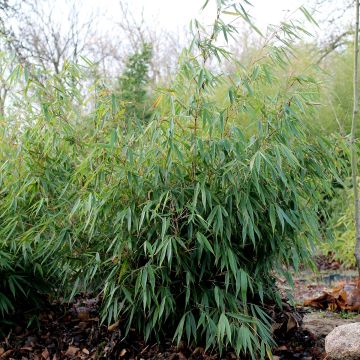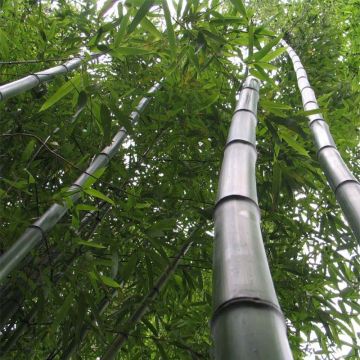
How to divide and multiply your bamboos?
Discover all our tips for successful division
Contents
Bamboos are robust plants that bring a touch of exoticism and freshness to the garden with their long stems, called culms. Ideal for creating a natural screen, they offer elegant verticality and unique graphics, whether in the ground or in pots on a terrace. Some varieties of running bamboos spread quickly, while others, such as Fargesia, grow in clumps without becoming invasive.
If your bamboos take up too much space after a few years, dividing bamboos is an excellent solution to control them while obtaining new young plants to replant or to give away. In pots, they can become too dense and cramped: division gives them back space and promotes their growth. Discover in this article how to divide and multiply your bamboos step by step!
When to divide bamboo?
Divide your bamboos preferably in early spring or autumn. Act when the soil is sufficiently moist to extract the bamboo clumps more easily. Avoid dividing them when the shoots (the new buds emerging from the rootstock) are in full development.

Discover other Bamboos
View all →Available in 2 sizes
Available in 3 sizes
Available in 3 sizes
Available in 1 sizes

Available in 3 sizes
Available in 2 sizes
Available in 1 sizes
Available in 2 sizes
Available in 1 sizes
Available in 1 sizes
How to divide bamboo?
For bamboo grown in the ground:
- If the soil is dry, water before intervening to facilitate division.
- Using a shovel or a spade, prepare planting holes 25 cm deep at the location intended for your young plants, loosening the soil and incorporating compost and possibly a bit of fertiliser. Note that a fork gives very good results with less effort.
- If dealing with running varieties, install a rhizome barrier by tilting it slightly outward at the top: when the rhizomes reach it, they will be directed towards the surface instead of sinking deep.
- Identify the culms furthest from the main clump, then dig them up by separating them from the mother plant using a sharp spade or a saw. Take a clump large enough to retain as many roots as possible around the tuft.
- You may optionally shorten the culms, keeping a few nodes and leaves on each, to balance the volume between the rhizomes and the aerial part.
- Replant the removed clumps, replace the soil around them, and then firm it down.
- Water
Continue to water frequently in the following weeks.
For bamboo grown in pots:
- Start by watering a few hours before intervening: bamboo is easier to divide when the soil is moist.
- Remove the clump from its pot and place it on the ground or on a table, horizontally.
- Divide it into two or three using a saw, prioritising the separation of the culms furthest from the clump.
- We recommend trimming the roots at the bottom of the clump with pruning shears to encourage the plant to develop new ones.
- Place your new clumps in pots with potting soil and fertiliser rich in nitrogen. Firm it down well to avoid air pockets.
- Water generously.
Place your plant out of direct sunlight and continue to water regularly to ensure good recovery.
Care after dividing bamboo
After division, bamboos generally take a few weeks to several months to fully resume their growth, depending on planting and watering conditions. During this period, it is essential to maintain fresh and well-moistened soil, while monitoring the appearance of new shoots, a sign of successful recovery.
After division, it is crucial to ensure proper care of the young plants to encourage their recovery. An organic mulch made of straw, bark, or dead leaves is highly recommended to retain soil moisture and protect the still fragile roots from temperature fluctuations.
Watering should be frequent, about 2 to 3 times a week during the first month, after which it can be gradually reduced depending on the weather and soil moisture.
If the division was carried out in autumn, the new shoots will need to be protected from frost by applying a thicker mulch or installing a winter cover if temperatures drop significantly.
Regarding exposure, it is preferable to keep the bamboos in partial shade immediately after division to avoid excessive stress, especially in cases of intense heat. Once well established, they can gradually acclimatise to a sunnier exposure.
- Subscribe!
- Contents







































